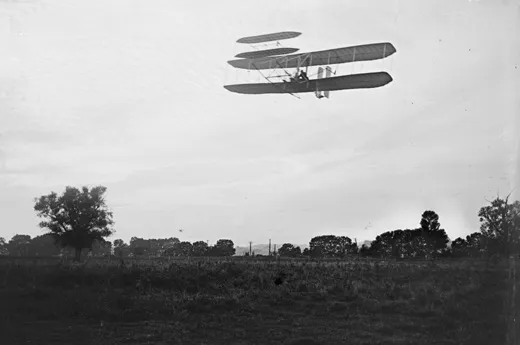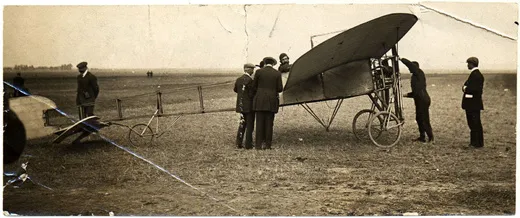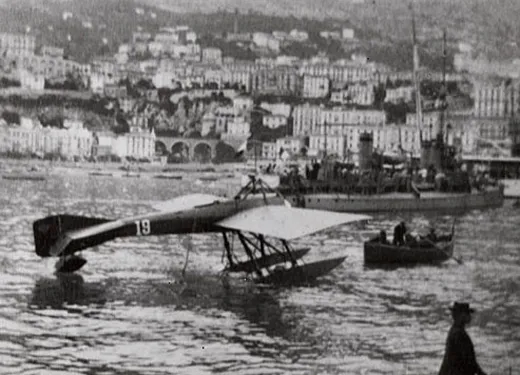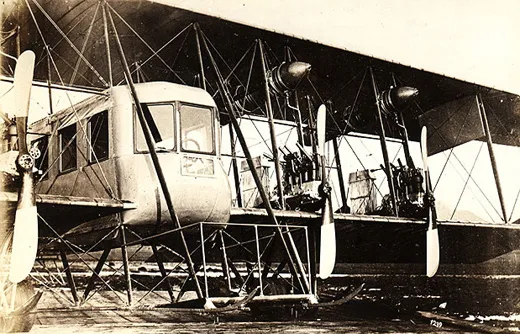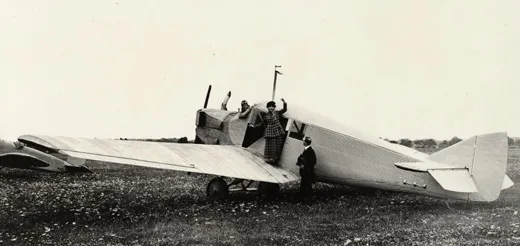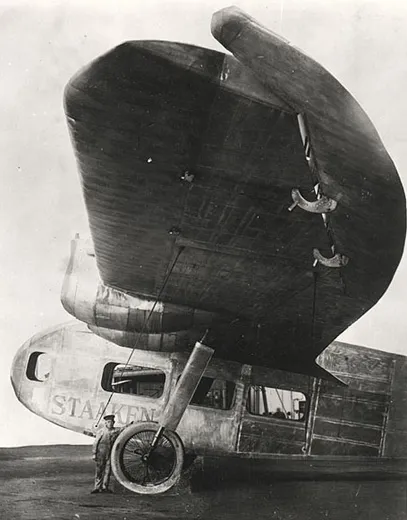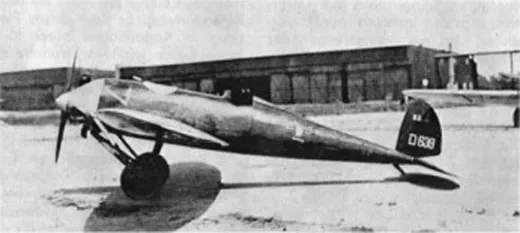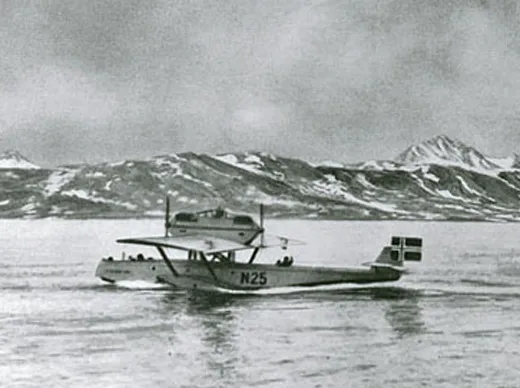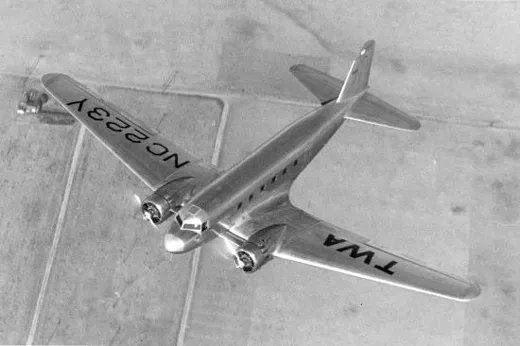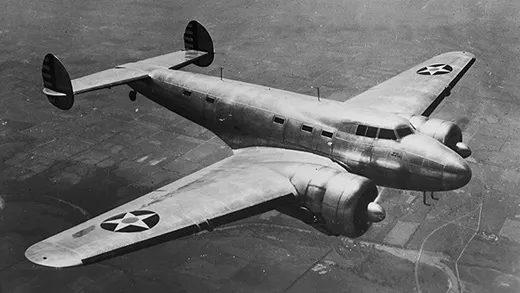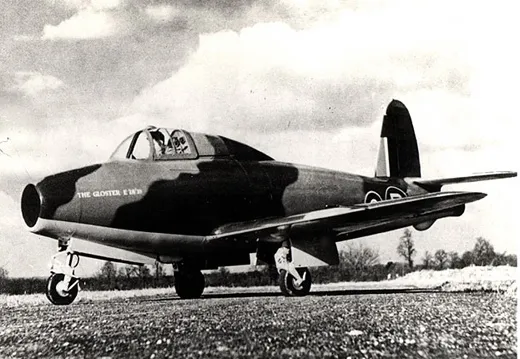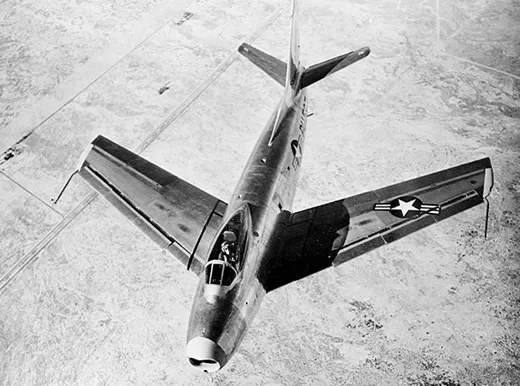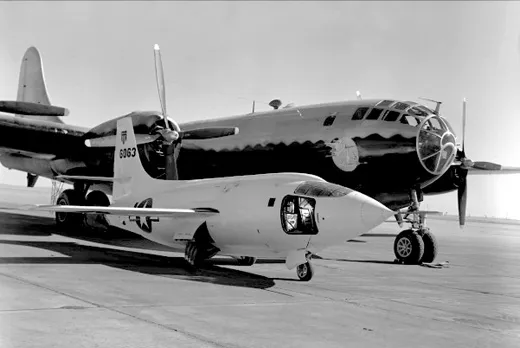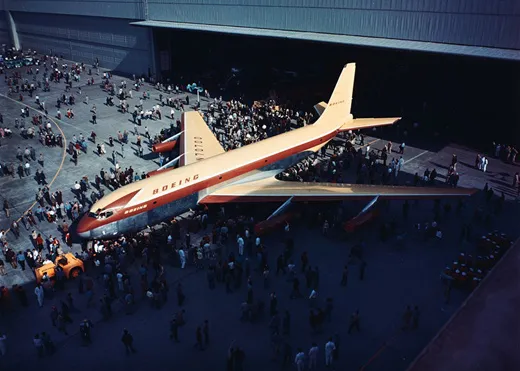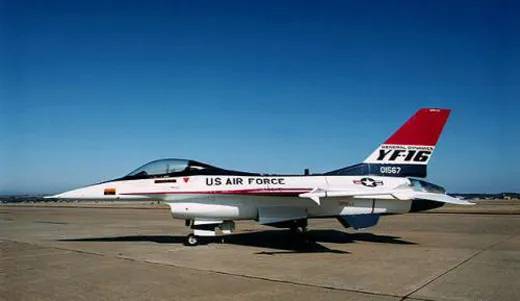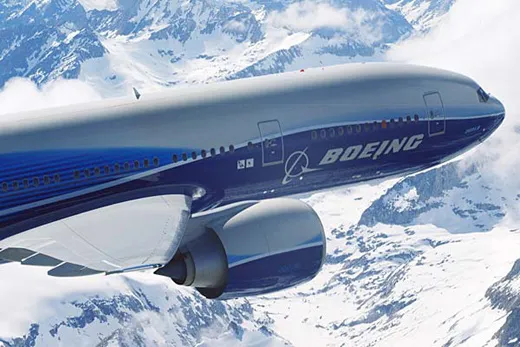Airplanes that Transformed Aviation
Sixteen historic designs that changed the game.
The history of aviation brims with airplanes that have represented the pinnacle of design: swift fighters, long-range bombers and transports, exciting sport biplanes, experimental airplanes that used the sky as a laboratory. Many set notable records, helped win wars, increased our mobility, trained thousands of pilots, or in any of a number of ways influenced aviation. Anyone remotely interested in the history of flight will instantly recognize the names: SPAD, Fokker Triplane, Vega, Comet Racer, Zero, Spitfire, MiG, Pitts, Starfighter, Blackbird, and Concorde, to name just a few.
But what were the transformational airplanes? The ones that changed design practice so that future aircraft of similar type were different from what had flown before?
The transformational airplane is a rarity, and surprisingly, many are not as well known as they should be. The innovations they introduce appear on subsequent designs that often become much better known. In other cases, they may be remembered for other qualities they possessed, qualities that mask or hide why they were technologically significant. A few changed not just aviation but the broader world around them; these are included in the article “10 Airplanes That Changed the World” in the June/July 2008 issue of Air & Space/Smithsonian. They are considered here, however, solely for their contribution to the art and science of flight.
The following is a very subjective list, offered as a stimulus for thought and discussion. Obviously, many other aircraft types could be nominated, and numerous lists of “also rans” are possible. Here goes!
(Richard P. Hallion was the Air Force Historian from 1991 to 2002, and is the author of more than a dozen books on aviation history.)
1. Wright 1905 Flyer
Not as well known as the first airplane, the 1903 Flyer, the Wright 1905 Flyer was the world’s first practical airplane. The 1903 and 1904 machines were purely experimental, laying the groundwork for three-axis control—in yaw, pitch, and roll. The 1903 Flyer had interconnected roll and yaw (wing warping and rudder). The 1905 Flyer, on the other hand, was the first airplane to have independent three-axis control.
Though it still used a catapult for launch and it still had the instability of all early Wright biplanes, the 1905 Flyer differed significantly from them. It had upright seating for its pilot and a passenger, twice the power of its predecessors, 50 percent greater speed, and much greater endurance, capable of flying for more than half an hour. In modern parlance, the 1905 Wright Flyer constituted a pre-production prototype for subsequent Wright production designs—and a template for the world’s aircraft that followed. Fittingly, visitors to the Wright Hall at Carillon Park in Dayton, Ohio, can see this remarkable airplane, magnificently restored, with the assistance of Orville Wright himself.
Further reading:
Marvin McFarland, Wright Papers (McGraw-Hill, 1953);
Wright Flyer curatorial files;
Charles Gibbs-Smith, Dictionary and Nomenclature of the First Aeroplanes (HMSO, 1966);
Kenneth Munson, Pioneer Aircraft (Macmillan, 1968).
2. Blériot XI
Louis Blériot’s unremarkable appearance masked a fine technical mind and a boldly adventurous, even courageous, personality. His Model XI is remembered for having made the first flight across the English Channel, on July 25, 1909—a feat of bravery, skill, and technology. And it had profound strategic implications: Britain’s Daily Mail newspaper proclaimed “England is no longer an island,” and indeed it wasn’t: In less than a decade, German Zeppelins and bombers would appear in its skies, marking the first Battle of Britain. But beyond all this, the Model XI established the tractor “engine in front” monoplane tradition, together with the classic tail-dragger landing gear. Larger, more powerful derivatives of the Blériot were the world’s first successful air exports, and among the first military reconnaissance and bombing airplanes to fly in actual combat. The Blériot signaled that European aviation, moribund after the death of German glider pioneer Otto Lilienthal in 1896, was back—and that the early era of unchallenged supremacy by the Wrights and Glenn Curtiss was at an end.
Further reading:
Charles Gibbs-Smith, Dictionary and Nomenclature of the First Aeroplanes (HMSO, 1966);
Kenneth Munson, Pioneer Aircraft (Macmillan, 1968);
Alfred Gollin, No Longer an Island: The Impact of Air Power on the British People and Their Government (Stanford University Press, 1989)
3. Deperdussin Monocoque
Conceived by Louis Béchéreau and Frederick Koolhoven and sponsored by Belgian silk merchant and manufacturer Armand Deperdussin, the Deperdussin Monocoque introduced the stressed-skin shell structure to aircraft design, which became a global design standard, first in wood and then in metal. This shapely machine also launched the streamlining revolution that continues to the present day. First flown in 1911, the Deperdussin Monocoque racer blended the Blériot-style monoplane approach with a much more refined form, giving it an appearance more typical of racers at the end of the 1920s than of aircraft flying less than a decade after the airplane's debut at Kitty Hawk. Thereafter it underwent steady design evolution. In September 1912, a more powerful and even smoother formed Deperdussin won the Gordon-Bennett Trophy Race in Chicago, becoming the first airplane to exceed 100 mph. It also introduced the powerful rotary engine to aircraft design. Deperdussin’s firm collapsed amid charges of fraud and embezzlement, and he went to jail. Blériot reorganized it, and Béchéreau remained its chief engineer, working with André Herbemont to design the wartime SPAD fighter—an aircraft that, festooned with struts and wires, hardly resembled the streamlined purity of its predecessor. But others did bear the resemblance—and on the other side, most notably the German Albatros, whose distinctive shark-like shape reflected Béchéreau’s pre-war design.
Further Reading:
Henri Mirguet, “Le Monocoque Deperdussin,” L’Aérophile, vol. 20, no. 18 (15 Sept. 1912);
“The 100-hp Deperdussin Racing Monoplane,” Flight, 10 Feb. 1912.
4. Sikorsky Il’ya Muromets
Igor Sikorsky had multiple careers in aviation. His flying boats made Pan American a success and ushered in the era of intercontinental aviation, and he became the greatest of helicopter manufacturers. Frustrated in his first attempts to build rotary-wing craft—his consuming passion—Sikorsky had turned to conventional aircraft design, emulating French and German design practice. In 1913 he had developed the Russkiy vitaz, the “Russian Knight,” more popularly known as Le Grand, the world’s first large multi-engine airplane. But it was its more practical and refined successor, the Il’ya Muromets (named for a legendary Russian warrior), that really established his reputation. With dual controls for a pilot and copilot, a plush cabin (with a lavatory, private suite, bed, and even balcony), and cabin heating and lighting, this large four-engine biplane anticipated all subsequent biplane bomber and transport aircraft. In June 1914, it flew from St. Petersburg to Kiev and back, and derivatives of it proved powerful and rugged wartime bombers. Indeed, the Il’ya Muromets was the first example of the “dual use” aircraft, with interdependent civil and military roles.
Further reading:
Igor I. Sikorsky, The Story of the Winged-S (Dodd, Mead, 1967 edition);
K. N. Finne, with Carl J. Bobrow and Von Hardesty, Igor Sikorsky: The Russian Years (Smithsonian Institution Press, 1987).
5. Junkers J-13 (F-13)
Little more than a decade after the Wrights first flew, Hugo Junkers reinvented the airplane. Historian Charles Gibbs-Smith writes of Junkers: “He may be fully and fairly credited with the design and construction of the first practical cantilever [internally braced] wing aeroplanes, the first practical all-metal aeroplanes, and the first low-wing monoplanes.” Junkers adopted the thick wing, which produced greater lift and enabled construction of cantilever wings. Suspicious of wooden construction, he opted for metal. Junkers’ transformational airplane was the J-13 of 1919, which, in mass production, was better known as the F-13. It had a low wing, an enclosed cabin, an all-metal structure, and a high degree of streamlining, and launched both global air transport and the era of the mass-produced, all-metal, aluminum-alloy airplane. More than 300 were delivered around the world, and it spawned a series of similar-looking descendants, culminating in 1932 in the Junkers Ju 52. By 1924, Junkers supplied fully 40 percent of the world’s transports, placing Germany at the forefront of air transport design, a position it held until dethroned by the United States in the early 1930s.
Further reading:
C. Gibbs-Smith, The Aeroplane: An Historical Survey (HMSO, 1960);
R. Blunck, Hugo Junkers: Ein Leben für Technik und Luftfahrt (Econ-Verlag GmbH, 1951 edition);
Hans-Liudger Dienel and Martin Schiefelbusch, “German Commercial Air Transport Until 1945,” in Revue belge de philologie et d’histoire, vol. 78, no. 3-4 (2000).
6. Zeppelin-Staaken (Rohrbach) E.4/20
Adolf Rohrbach narrowly missed being Germany’s Boeing or Douglas, largely because of the fate of his E.4/20. Like Junkers, Rohrbach favored thick-wing cantilever monoplanes, but unlike Junkers, who used tubes and ribs covered with corrugated sheet, Rohrbach used dural stressed skin employing a single torsion-box spar running from wingtip to wingtip, its smooth top and bottom serving as the wing’s upper and lower surfaces. Leading- and trailing-edge ribs, attached to the front and back faces of this box and covered with thin dural sheet, gave the wing its shape. His E.4/20 of 1920 was a streamlined, all-dural design powered by four engines, weighing 18,700 pounds loaded. Only large wheels and landing gear struts marred its lines, and its high-placed, tapered, cantilever wing spanned 102 feet. It had a cabin that seated up to 18, as well as a lavatory and generous mail and luggage space. At its first flight, in 1920, both its design and performance—cruising more than 130 mph at less than full power, and ranging nearly 850 miles—were a good dozen years beyond what any other airliner had attained.
To comply with post-World War I restrictions, the Allies ordered it destroyed in November 1922, a sad loss. But though never itself produced, many of its features—stressed skin, torsion-box spar, leading edge engines, and gracefully tapered wing—became standard elements of long-range aircraft, as did its general configuration.
Further reading:
A. K. Rohrbach, “Das 1000-PS Verkehrsflugzeug der Zeppelin-Werke, Staaken,” Zeitschrift für Flugtechnik und Motorluftschiffahrt, vol. 12, no. 1 (15 Jan. 1921); E. Offermann, W. G. Noack, and A. R. Weyl, Riesenflugzeuge, a volume in the Handbuch der Flugzeugkunde series (Richard Carl Schmidt & Co., 1927).
7. Bäumer Sausewind
Paul Bäumer was a master of reinvention: a pre-war dental assistant turned wartime fighter ace, a postwar dentist, and then an airplane manufacturer. His streamlined, two-place Sausewind (“Rushing Wind”), designed to compete in a 1925 light-aircraft race, anticipated the definitive streamlined form of the propeller-driven airplane. Designed by Walter Gunter, who, together with his brother Siegfried, possessed a rare genius, the airplane had a beautiful wooden elliptical wing joined to a smooth, plywood monocoque fuselage, with similar elliptical vertical and horizontal tail surfaces. Bäumer died in a 1927 accident flying another company’s airplane, and the Gunters moved to Heinkel. There, they used the Sausewind's aerodynamic shape for the Heinkel He 70 Blitz high-speed transport. Beverly Shenstone, who worked with Reginald Mitchell at Vickers Supermarine and was responsible for the Spitfire’s aerodynamic design, recalled that he “used the He 70 as an aerodynamic target when calculating the Spitfire performance,” praising its “brilliance and style.” It was the ultimate compliment one could pay the Sausewind, which flew with a perfect elliptical wing a full decade before Mitchell’s legendary fighter.
Further reading:
Georg Madelung, “Der Otto Lilienthal Wettbewerb,” in Wilhelm Hoff (editor), Jahrbuch 1926 der Deutschen Versuchsanstalt für Luftfahrt, e.v., Berlin-Adlershof (DVL, 1926);
Richard von Mises, “Mathematical Problems in Aviation,” The American Mathematical Monthly, vol. 47, no. 10 (Dec. 1940);
H. Dieter Köhler, Ernst Heinkel—Pionier der Schnellflugzeuge (Bernard & Graefe, 1999);
B.S. Shenstone, “Germany’s Turbulent Pioneer,” The Aeroplane (7 Feb. 1958).
8. Dornier Wal
The name Dornier is forever associated with a series of Second World War bombers and with the awkward-looking Do X flying boat of 1929, which became the first transatlantic airliner. But behind them was the airplane that company founder Claude Dornier credited with saving his firm: the Dornier Wal (“Whale”). “The Wal made Dornier,” he once remarked, and besides, it made oceanic flying boat operations practical. Blending Duralumin (an aluminum alloy) construction techniques derived from Dornier’s years at Zeppelin with rugged ship-building practice, the twin-engine Dornier Wal, which first flew in 1922, embodied significant design refinement, including use of a high, semi-cantilever monoplane wing and broad stabilizing sponsons in place of higher-drag and more complex wingtip floats. Thus the Wal anticipated the design of the most successful large passenger-carrying seaplanes, aircraft such as the Martin M-130 (the famed “China Clipper”) and the Boeing 314. But it was a notable international success itself. More than 300 were built in Italy, Netherlands, Japan, Spain, and Russia, for both military and civil purposes, using a variety of engines. It established a number of world records for speed and payload, spanned the Atlantic and circled the globe, and gave rise to more powerful three- and four-engine streamlined successors. It was a favorite mount for explorers: Indeed, the Wal was the first aircraft to significantly influence the study of Earth, its polar regions, and the environment in general.
Further reading:
Roald Amundsen and Lincoln Ellsworth, Air Pioneering in the Arctic (National Americana Society, 1929);
M. Michael van der Mey, Dornier Wal: “A Light Coming Over the Sea” (LoGisma editore, 2005).
9. Douglas DC-1
The Douglas DC-1, created by a team led by Arthur E. Raymond, may be said to be the first scientifically designed American airplane. It blended the research and experience of industry, federal research laboratories such as the National Advisory Committee for Aeronautics (NACA), and academic centers, specifically the Guggenheim Aeronautical Laboratory of the California Institute of Technology, where its shape was refined by extensive wind tunnel testing. The aircraft utilized the all-metal, multi-cell structure John Knudsen Northrop had developed previously for his Alpha of 1930 (when, ironically, he was partnered with Boeing). The 12-passenger, twin-engine DC-1 blended advanced aerodynamics (typified by turbulence-reducing wing-fuselage fillets, payload-enhancing wing flaps, and refined engine cowling placement); higher-strength aluminum alloys; a retractable landing gear; controllable pitch propellers; and a lightweight monocoque fuselage structure. Its superiority over the rival Boeing 247 was evident from the outset: Little more than a week after its first flight, TWA chief pilot D.W. “Tommy” Tomlinson, one of the most experienced test pilots of the time, reported jubilantly to company president Richard W. Robbins: “I think we have a fine airplane.” Indeed: It spawned the DC-2 and DC-3 and an entire “DC generation,” its shape as symbolic of 1930s Modernist aeronautics as Boeing’s swept-wing 707 was of the 1950s, or Concorde’s ogival double-delta was of the 1970s.
Further reading:
D.W. Tomlinson to R.W. Robbins, 9 July 1933, Box 124–517, Charles A. Lindbergh Papers, Yale University Library;
D.W. Douglas, “The Douglas DC-1 Airliner,” Aero Digest, vol. 23, no. 4 (Oct. 1933);
Douglas J. Ingells, The Plane That Changed the World (Aero Publishers, 1966);
Peter W. Brooks, The Modern Airliner (Putnam, 1961).
10. Lockheed XC-35
Lockheed’s XC-35 was the world’s first aircraft specifically constructed with a pressurized passenger cabin and, as aerospace medical historian Douglas Robinson notes, is “the true ancestor of all modern pressurized airliners.” Credit for the cabin goes to structures experts Major Carl Greene and John Younger, both of whom worked for the Air Corps Engineering Division at Wright Field (now Wright-Patterson Air Force Base) in Ohio. They worked with Lockheed to redesign the fuselage of the Lockheed 10A Electra, adding two turbosuperchargers to its radial engines both to improve altitude performance and to feed air to the cabin. Designated XC-35 and delivered to Wright Field in May 1937, it began flight testing in July, flying up to 33,000 feet while maintaining a cabin pressure of 9.5 pounds per square inch. The XC-35 underwent an extensive series of high-altitude flight tests, proving the practicability of pressurizing the cabin. So confident were Army Air Corps leaders of its safety that they allowed it to be used as an executive transport for Louis Johnson, the assistant secretary of war. The XC-35 won the 1937 Collier Trophy for the Air Corps. But more significantly, it pointed the way for pressurized bombers and transports, the first of which were Boeing’s B-29 and Model 307.
Further reading:
National Museum of the U.S. Air Force XC-35 Data Sheet;
XC-35 Curatorial File, National Air and Space Museum;
Douglas Robinson, The Dangerous Sky (University of Washington Press, 1973).
11. Gloster E.28/39
Two great revolutions transformed aeronautics at mid-century: the invention of the jet engine, and the development of high-speed aerodynamic theory enabling the development of transonic and supersonic aircraft. Though the Gloster E.28/39 was not the first jet airplane to fly—that distinction goes to the Heinkel He 178, flown in August 1939—it was the most influential of the first jet airplanes flown, as its engine had a far greater impact on turbojet engine development than the engine flown in the He 178. While the He 178's engine proved a dead end technically (as Germany emphasized axial, not centrifugal, compressors), the Whittle engine used in the E.28/39 influenced international gas turbine design—being, for example, the first jet engine used by America's own first jet aircraft, the Bell XP-59A of 1942. The X.28/39 was strictly a research aircraft, intended to verify the merits of the gas turbine, using an engine developed by Royal Air Force Wing Commander Frank Whittle. On May 15, 1941, it became the first British turbojet aircraft to fly. In April 1941, U.S. Army Air Corps Major General Henry H. “Hap” Arnold visited England and became aware of Gloster and Whittle’s work. He immediately arranged for importation of Whittle engine technology to the United States, and it formed the basis for the first U.S. jet airplane, the Bell XP-59A Airacomet. The E.28/39 demonstrated the practicality of a turbojet-powered airplane, and from this demonstration sprang Gloster’s next jet project, the F.9/40, better known to history as the Meteor. For its influence on British and U.S. aircraft design, and through that, upon Soviet, Chinese, and French design, the E.28/39 is the most significant of early jet test beds.
Further Reading:
William Green, The Jet Aircraft of the World (Hanover House, 1957);
Andrew Nahum, Frank Whittle: Invention of the Jet (Icon Books, 2004);
Walter J. Boyne and Donald S. Lopez, The Jet Age (Smithsonian, 1979).
12. North American XP-86 Sabre
The North American F-86 Sabre is justly famous as America’s first swept-wing jet fighter, triumphing over the MiG-15 in swirling dogfights over the Yalu River during the Korean War. The Sabre was the world’s first aircraft designed with a swept wing deliberately to attain a high-speed advantage. The first to fly was the prototype XP-86, in October 1947. The low-speed, swept wing, intended to impart inherent longitudinal stability, had appeared before the First World War. The advantages of the high-speed swept wing were to delay transonic drag rise and shock wave formation and, if sharply swept, to remain within the subsonic air flow contained within the shock cone that forms around a supersonic airplane. These advantages were first enunciated by a young German aerodynamicist, Adolf Busemann, in an Italian conference in 1935. Ignored at the time by all but Germany, the high-speed, swept wing was independently rediscovered by Robert Jones, working at the NACA’s Langley laboratory in Virginia in 1944. Though Germany had many swept-wing projects on the drawing boards, it did not field a true swept-wing aircraft. (The Me 262 was, like the Douglas DC-3, basically a straight-wing aircraft with pronounced leading edge taper, and the rocket-powered Me 163, which used a swept wing for both stability and high-speed flight, had such abysmal flying qualities that it could not take advantage of its wings’ sweep). The XP-86 gave to the world the first truly transonic swept wing, the iconic shape of the Jet Age.
Further reading:
W. Green, The Jet Aircraft of the World;
Adolf Busemann, “Aerodynamische Auftrieb bei Überschallgeschwindigkeit,” Luftfahrtforschung, vol. 12, no. 6 (3 Oct. 1935);
Robert T. Jones, “Wing Planforms for High-Speed Flight,” NACA Technical Note 1033 (1946) [23 June 1945];
Richard P. Hallion, “Lippisch, Gluhareff, and Jones: The Emergence of the Delta Planform and the Origins of the Sweptwing in the United States,” Aerospace Historian, vol. 26, no. 1 (March 1979).
13. Bell XS-1
Conceived to make up for shortfalls in wind tunnel design (existing tunnels could not accurately test models at transonic speeds), the rocket-powered Bell XS-1 became the world’s first supersonic airplane, demonstrating the transonic benefits of a thin, low-aspect-ratio wing (essentially, one that is short and broad, like the wing of a Piper Cherokee) coupled with a streamlined, bullet-shaped body and an adjustable horizontal stabilizer for greater longitudinal (pitch) control efficiency as an airplane approached the speed of sound. It likewise validated the concept of the fully instrumented research airplane that used the sky essentially as a laboratory. Remembered best for its most famous flight—to Mach 1.06 (700 mph) at 43,000 feet, flown by Charles E. “Chuck” Yeager on October 14, 1947—the XS-1 family consisted of three aircraft. Though the third was lost before powered flight testing, the first two flew for years on a variety of transonic and supersonic research missions. It was, effectively, the aircraft that opened the door through the sonic wall, giving aeronautical science its first full look at the tangles and traps of the transonic and supersonic frontier, and it led to the bigger and faster advanced X-1 family that, in the early 1950s, flew beyond Mach 2 and 90,000 feet, to the edge of the atmosphere.
Further reading:
U.S. Air Force, Air Force Supersonic Research Airplane XS-1 Report No. 1 (Wright-Patterson Air Force Base, 9 Jan. 1948);
Richard P. Hallion, Supersonic Flight (Macmillan/Smithsonian, 1972)
14. Boeing 367-80
With its podded engines and low-placed swept wing, Boeing’s “Dash 80” of 1954 gave to the world the generic configuration of the medium- and long-range jetliner. Though other variations would appear, such as aft-mounted engines and T-tails, the basic configuration of the jetliner was set by this remarkable design, which ensured that U.S. air transport would remain dominant in the global marketplace for another quarter-century, until challenged by the rise of Airbus. The Dash 80 was conceived to serve as two types of aircraft: a fast tanker to refuel the Strategic Air Command’s swept-wing B-47 and forthcoming B-52 bombers—also products of the Boeing stable—and a military transport. The Dash 80 is best remembered as the progenitor of the civil 707, which revolutionized air transport across the north Atlantic. From 1958 onward, thanks to the jet airliner revolution, air transportation increasingly became more democratic and less elite. The introduction of the wide-body “jumbo,” beginning with the Boeing 747, was the logical outgrowth of the 367-80 program. Today, the 367-80 is in the collection of the National Air and Space Museum, and most 707s have been reduced to coffee pots. But the direct outgrowth of the Dash 80—the KC-135 family and its own derivatives—still serve in large numbers with the Department of Defense and will do so for decades to come, at least through the first third of this century.
Further reading:
Harold Mansfield, Vision (Duell, Sloan, and Pearce, 1956);
Eugene Rodgers, Flying High (Atlantic Monthly Press, 1996).
15. General Dynamics YF-16
Created out of controversy—the debate over whether U.S. fighter aircraft were becoming too big, complex, and expensive—the YF-16 program spawned one of the largest aircraft production efforts the United States ever undertook, serving in the air forces of numerous nations and generating derivatives of its own. But the greatest significance of the YF-16 was in its use of a computer-controlled, electronic “fly by wire” flight control system, a necessity, given that the aircraft was, like the Wright brothers’ original airplanes, inherently unstable and thus required constant control surface deflection to keep in trim. This “relaxed static stability,” coupled with a powerful afterburning turbofan engine and a lightweight design, gave the YF-16 extraordinary maneuverability and the ability to accelerate in a vertical climb. Though it was not the first fly-by-wire airplane (a succession of various test beds contributed incrementally to producing this technology, particulary a modified Air Force F-4 Phantom II and a NASA F-8 Crusader), it was the first fighter designed to incorporate combat-rated electronic flight control architecture. But it had other noteworthy features: a seat slanted to increase pilot G-tolerance; an X-15-like side-stick flight controller; forebody strakes to produce extra lift, increase stability, and decrease stall speed; and automatic leading edge maneuvering flaps. First flown in 1974, the YF-16 led to the slightly larger F-16A Fighting Falcon, which first flew in 1976 and became NATO’s replacement for the F-104 fighter, and immensely successful in its own right. The YF-16 introduced and validated practical electronic fly-by-wire flight control, which became a standard feature of advanced military and civilian aircraft, some of which, such as the unstable F-117 and B-2, could not fly without it.
Further reading:
David C. Aronstein and Albert C. Piccirillo, “The F-16 Lightweight Fighter: A Case Study in Technology Transition,” in J. Neufeld et. al, editors, Technology and the Air Force (U.S. Air Force, 1997).
16. Boeing 777
Since the Model 367-80, the dominant paradigm in air transport design has been the “tube and swept-wing” airliner. In this respect, Boeing’s 777, which first flew in June 1994, looks little different from any other jetliner. But the 777 represented not only a considerable risk for Boeing but a gamble across the fields of industrial design, structures and materials, propulsion, and flight control technology. Designed to fit between the large 747 and the smaller 767, the 777 occupied a special niche in Boeing’s corporate inventory. It was created to compete with the McDonnell Douglas MD-11 (a DC-10 derivative) and the Airbus A330/340. Its twin engines each had to produce 90,000 pounds of thrust, a hundred times greater than the initial thrust of Frank Whittle’s first jet engines a half-century before. Boeing incorporated a fly-by-wire flight control system, made extensive use of composite structural materials, and—the boldest step of all—undertook all design of the aircraft on computers connected to 2,200 terminals, thanks to a program called CATIA (Computer-Aided Three-dimensional Interactive Application), which, ironically, came from Dassault in France, home of the rival Airbus. In the 1970s, engineers threw their slide rules away, replacing them with calculators. In the late 1980s and early 1990s, they threw away their drafting tables as well. That may well prove the 777’s greatest bequest to aviation history.
Further reading:
Eugene E. Bauer, Boeing: The First Century (TABA Publishing, Co., 2000)
